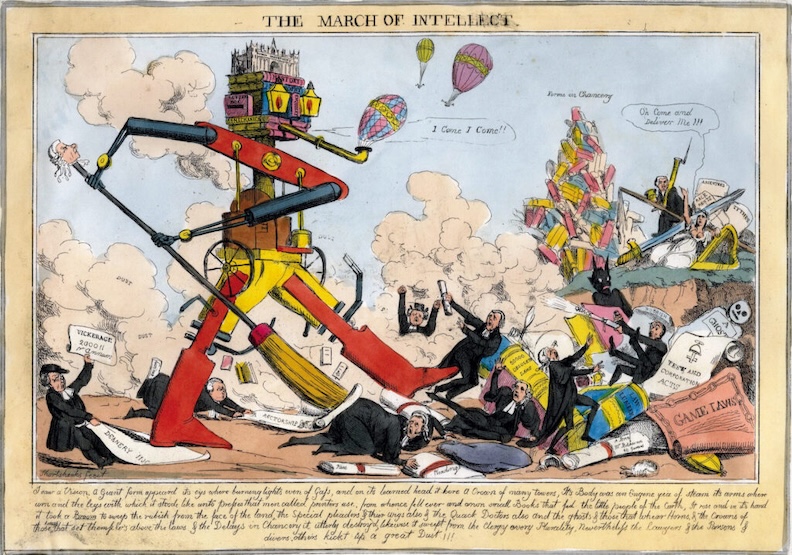If you don’t know about Waymo, the autonomous taxi service, now’s the time to learn, because it’s coming to a neighborhood near you. Maybe not now or next year. But inevitably, like death and taxes. Except it’s more fun, more fun, that is, unless you’re the one guy in 10,000 who gets stuck in a rogue AI vehicle with a software glitch that won’t stop driving and won’t let you out until its battery runs down. But hey, nothing in this life is perfect.
So on a recent visit to our oldest son and his family, my wife and I drove around San Francisco in a Waymo AI taxi. It was an impeccably executed, quite astonishing experience. Waymo actually works. The good news is that there was nobody at the steering wheel to fiddle with the radio, abduct one’s daughter, curse the traffic, or daydream about getting even with that idiot at the office.
That’s also the creepy news. There was nobody at the steering wheel.
Waymo is a game-changing technology in embryonic form. It currently operates in Phoenix, Los Angeles, San Francisco, Austin, and Atlanta. New York and Philadelphia are in the planning stage. Dallas, Miami, and Washington are scheduled to start service next year.
It’s tempting to hope that some of our nation’s more irritating leaders might disappear down a wormhole in an AI taxi with a mind of its own. But that likelihood is extremely low. The vehicle software is already too reliable and relentlessly getting better. In fact, driverless AI helicopter taxis are just around the corner. And that’s not a joke. For those who doubt, check here and here. After all, what could go wrong riding a giant battery at 3,000 feet without a pilot?
But there’s a hitch. AI giveth, and AI taketh away. Every new technology, as Edward Tenner warned in Why Things Bite Back, has unintended, and often unwelcome, consequences. He was not alone. Neil Postman made the same argument in his masterwork Technopoly. Artificial intelligence was supposed to make life in general and work in particular easier and more enjoyable, freeing up time for more leisurely pursuits, right? Alas, no.
In mid-July, the Wall Street Journal – a publication with an almost maniacal enthusiasm for AI – reported that, for the average worker, getting more work done faster usually means. . .doing more work. As one expert admitted, “new technologies that speed up aspects of knowledge work tend to just lead to faster-paced knowledge work.” The same story noted that “the real beneficiaries [of AI in the workplace] are likely to be businesses looking to squeeze more productivity” out of their human employees.
There’s more. Later in July, the same publication reported that AI is killing off summer internships and entry-level jobs typically filled by recent college grads. Unemployment among young adults with a four-year college degree is actually rising faster than among those with simply a high school or two-year associate degree. The result is “ominous” for young people because it’s leading to “a potentially fundamental realignment in how the workforce is structured. As companies hire and train fewer young people, they may also be shrinking the pool of workers that will be ready to take on more responsibility in five or 10 years.”

As AI advances, the result is deep job cuts. According to Ford Motor Company CEO Jim Farley, AI is likely to wipe out half of all U.S. white-collar jobs. “For new graduates,” according to the Journal story, “not only are they competing for fewer slots, but they are also increasingly up against junior workers who have been recently laid off.”
So what’s the point of all the words above? Just this: We’re never as smart as we think we are, and we’re rarely as wise as we need to be. So a little humility might go a long way. But humility is not our species’ strong suit.
Jesus himself was a tekton, the ancient Greek word for artisan or craftsman, especially in carpentry. Many, if not most, technologies are morally neutral. They’re tools we use for good or ill; for creating beauty or destroying life. They enhance our power to shape our environment, and that’s very often an ennobling thing.
It’s exactly so for my own youngest son with Down syndrome, who has access to learning and work opportunities that simply didn’t exist for the cognitively disabled half a century ago. The problem with tools is that, in using them, they also shape us. They mold how we think and act. And the more power they provide, the more vanity and self-delusion they tend to encourage.
Exactly five years ago, in the COVID-soaked summer of 2020, the World Economic Forum launched an initiative with the modest title of “the Great Reset.” Its goal, in the words of my favorite AI search engine, Perplexity, was to encourage a global economic and social recovery prioritizing sustainability, equity, and resilience.
A new and much better world was within our grasp. And miraculous new tools from the Fourth Industrial Revolution – like artificial intelligence and other powerful digital technologies to promote greener and fairer growth – would help us make it happen.
Conspiracy theorists promptly dumped on the plan as a power grab by global elites. But they needn’t have bothered. Five years later, we have wars in Ukraine and the Middle East, Islamist savagery against Christians in Africa, political hatreds here at home, and economic inequalities and tensions globally. The world is largely unchanged.
G.K. Chesterton once asked: What’s wrong with the world today? He answered: “I am.” What’s wrong with the world is me. What’s wrong the world is us. Waymo, AI, and all the other stunning achievements of the creature we call “human” speak to the intelligence and dignity of our species. But they don’t change who we are. In the end, what’s wrong with the world is us. And the only “Great Reset” that matters is the conversion of our own hearts.
The post Notes on a ‘Great Reset’ appeared first on The Catholic Thing.










